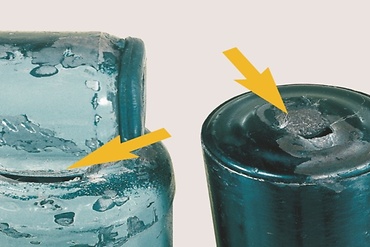How-to-guide
Apparently leaking shocks often don't indicate a defect, but are absolutely tight and functioning properly. A certain amount of “perspiration” is completely normal, and even necessary to lubricate the piston rod seal. Therefore never assess the dampers after driving in the rain. When you check them, they must be dry.
Here is the best way to do the job:
- Feel the damper with dry fingers.
- If your fingers remain dry, the damper is usually not leaky. If you have any doubts, thoroughly wipe the damper and check it again after a few days.
SACHS offers free service information to download on what causes leaking shock absorbers, on their symptoms and other topics. The following sections also give you some useful tips on how to fix leaking shock absorbers:
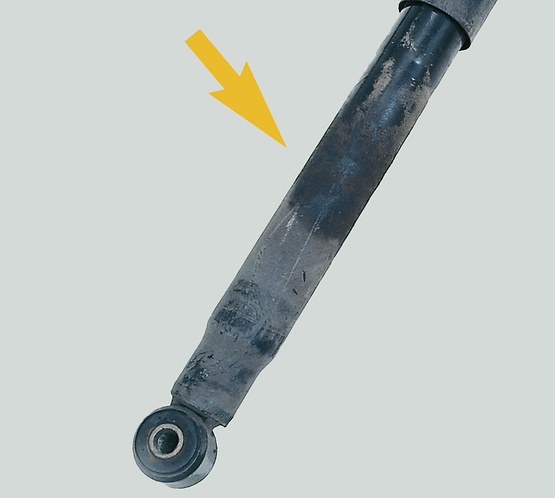
Cause:
During every stroke, the piston rod carries a very small amount of oil from the working cylinder to lubricate the seal.
Consequence:
If the damper was bone-dry, residue from this oil will be visible.
Comment:
This oil does not indicate a damper defect; it is perfectly normal. Following extended periods of use, oil mist residue may even be visible on around one third of the reservoir tube.
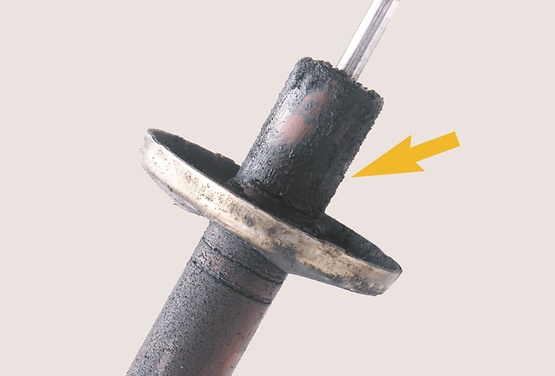
Cause:
- If you find clear traces of oil on a damper, the cause is usually worn piston rod seals. There are various reasons for such wear:
- Long runtime
- High stress
- Sand or road dirt
Consequence:
The defective piston rod seal leads to oil loss which in turn reduces the damping force. The clear traces of oil indicate that the damper needs replacing.
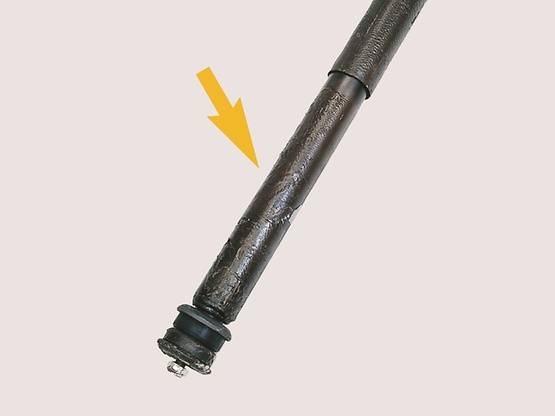
Cause:
Sometimes you find traces of underbody sealant or preserving wax on a car's dampers. You can be certain these substances did not get there due to a leaking shock absorber. Usually, such traces indicate that underbody sealant or wax was deliberately applied manually to ensure the greatest possible durability of the components. However, this procedure is unfortunately not effective.
Consequence:
- It appears that oil is leaking.
- Heat dissipates more slowly.
Comment:
Underbody sealant or preserving wax do not belong on the dampers, so remove them! Accumulated road dirt is also often wrongly diagnosed as leakage.

Cause:
- Leakage can also occur when the chrome coating on the piston rod is worn out. The reasons for this are usually:
- Strong distortion of the damper during installation
- Misaligned attachment points
Consequence:
Wear on seal and piston rod guide, leading to oil loss and reduced performance
Comment:
You can prevent damage to the chrome coating on the piston rod by only tightening damper screws once the vehicle is standing on its wheels.
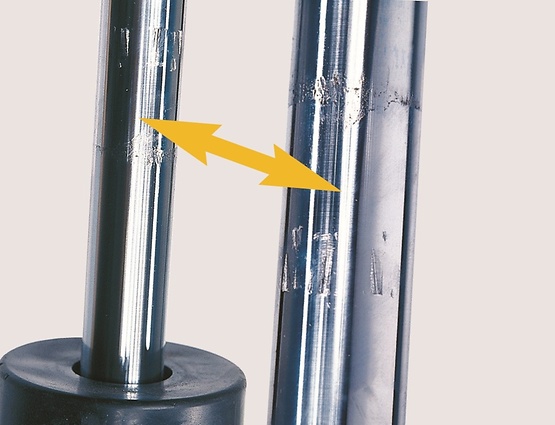
Cause:
Damage to the piston rod surface can also make the damper leaky. Usually, this kind of damage occurs when the piston rod has been held with pliers during assembly.
Consequence:
The rough piston rod surface causes the seal to tear, leading to oil loss and reduced performance.
Comment:
To avoid damaging the piston rod, only use special tools.
ZF Aftermarket product range
Discover the complete portfolio of suspension systems in our product catalog.
